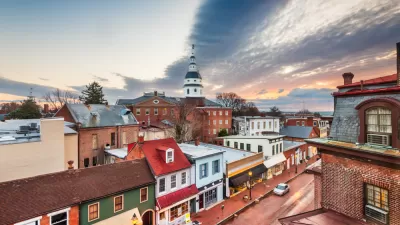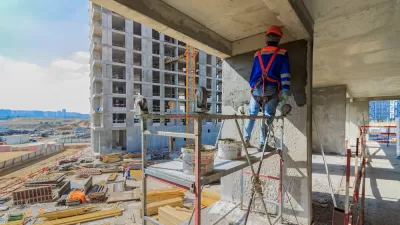Smart policies can ensure that low- and moderate-income households can find suitable housing in good neighborhoods where transportation costs are low. The research is clear: upzoning works.

"If we want to increase the supply of affordable housing, it's important to understand that it's not just about housing. Too often, efforts to increase affordability ignore transportation costs, resulting in cheap housing in isolated areas with high vehicle expenses. When all costs are considered, it's clear that the best way to increase affordability and economic opportunity is “upzoning” — allowing more housing in a given area — in accessible, high-opportunity neighborhoods."
"In the past, affordability was defined as households being able to spend less than 30 percent of their budget on housing, but many experts now define it as spending less than 45 percent on housing and transportation combined. That definition recognizes that a cheap house is not truly affordable if it’s located in an isolated area with high transportation costs, and that households can rationally spend more for housing in a walkable, mixed-use neighborhood where transportation is cheaper."
"This has important policy implications beyond simply increasing the supply of homes that people can afford. Smart-growth policies that increase affordable infill — more housing in existing residential areas — also can help achieve many economic, social and environmental goals. We know that children tend to be happier, healthier and more successful if they grow up in high-opportunity neighborhoods: areas with mixed incomes, good schools and convenient access to services and jobs."
FULL STORY: A Recipe for Achieving Real Housing Affordability

Planetizen Federal Action Tracker
A weekly monitor of how Trump’s orders and actions are impacting planners and planning in America.

Chicago’s Ghost Rails
Just beneath the surface of the modern city lie the remnants of its expansive early 20th-century streetcar system.

San Antonio and Austin are Fusing Into one Massive Megaregion
The region spanning the two central Texas cities is growing fast, posing challenges for local infrastructure and water supplies.

Since Zion's Shuttles Went Electric “The Smog is Gone”
Visitors to Zion National Park can enjoy the canyon via the nation’s first fully electric park shuttle system.

Trump Distributing DOT Safety Funds at 1/10 Rate of Biden
Funds for Safe Streets and other transportation safety and equity programs are being held up by administrative reviews and conflicts with the Trump administration’s priorities.

German Cities Subsidize Taxis for Women Amid Wave of Violence
Free or low-cost taxi rides can help women navigate cities more safely, but critics say the programs don't address the root causes of violence against women.
Urban Design for Planners 1: Software Tools
This six-course series explores essential urban design concepts using open source software and equips planners with the tools they need to participate fully in the urban design process.
Planning for Universal Design
Learn the tools for implementing Universal Design in planning regulations.
planning NEXT
Appalachian Highlands Housing Partners
Mpact (founded as Rail~Volution)
City of Camden Redevelopment Agency
City of Astoria
City of Portland
City of Laramie





























